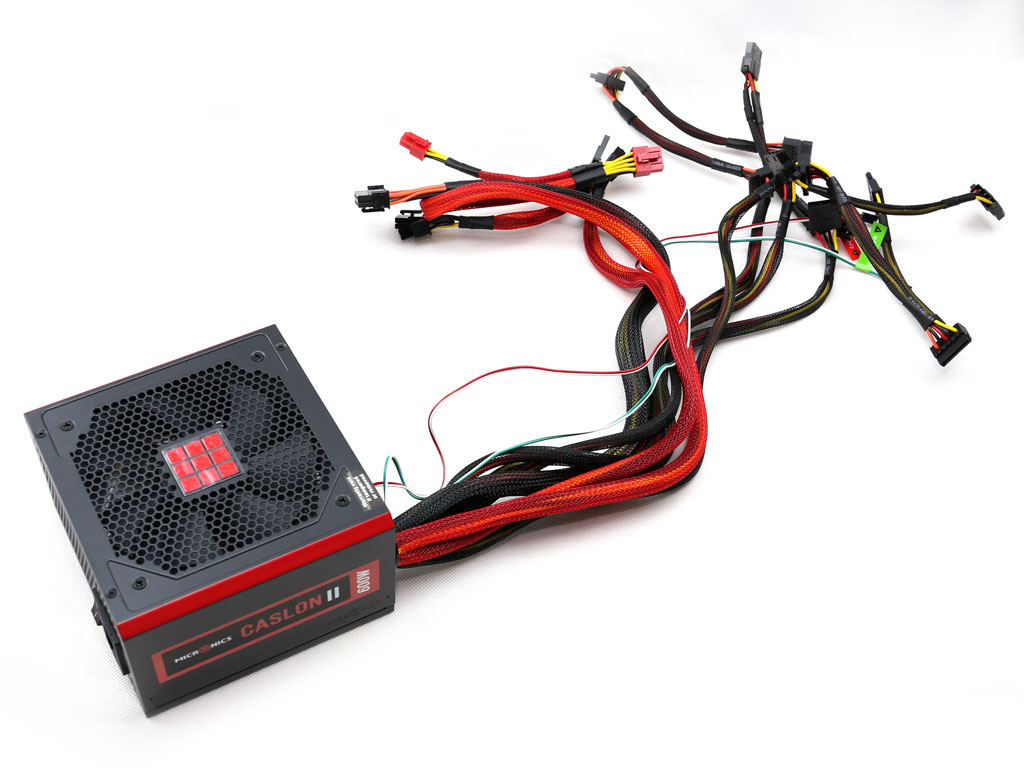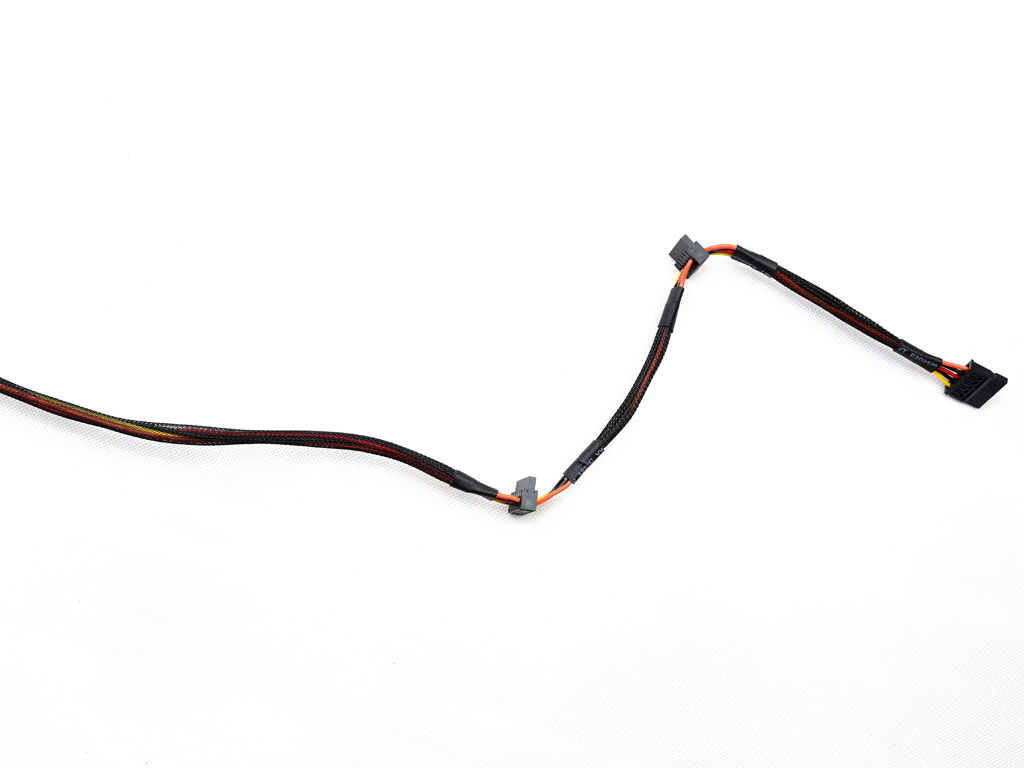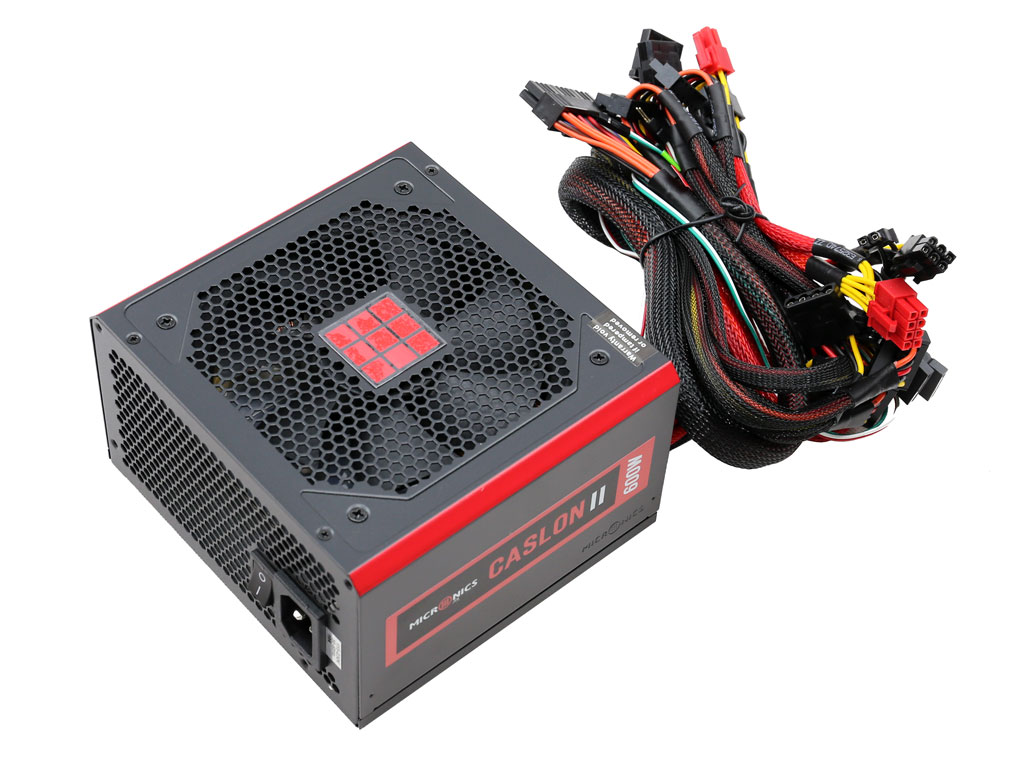Tom's Hardware Verdict
At a ~$50 price, the Caslon II 600W would earn a much better value score compared to its current $63 tag. The FDB fan, zero-wattage feature, and after-cooling mode are nice. But low efficiency and mediocre performance attributable to the outdated platform, along with native cables and incorrectly-configured protections are significant flaws.
Pros
- +
Full power at 47°C
- +
Ripple suppression (for this price range)
- +
FDB fan
- +
Zero-wattage mode
- +
After-cooling function
Cons
- -
Efficiency
- -
Not-so-quiet operation
- -
High OPP and OCP triggering points
- -
Performance with unbalanced loads
- -
Non-modular cable design
- -
Outdated platform
Why you can trust Tom's Hardware
Features & Specifications
Micronics is a Korean manufacturer that we haven't encountered before. Naturally, then, we're curious to check out what it has to offer. A quick look at Micronics' site shows that, aside from PSUs, it also sells cases, fans, liquid cooling products, sound bars, and all-in-one enclosures.
The company incorporates a couple of patented technologies into some of its power supplies. One is a cooling feature that keeps the fan spinning after shut-down to exhaust waste heat, similar to Enermax's HeatGuard. The other is designed to practically eliminate vampire power by deactivating the 5VSB rail.
The 600W Caslon II is what Micronics chose to send over for review. At the time this was written, Newegg had it in stock for $63. Budget-conscious builders must have snatched up that first batch, though. Now the listing simply says Not Available.
If you are looking for a highly efficient power supply, the Caslon II probably isn't for you. It's 80 PLUS Bronze- and ETA-Standard-certified, which is weird to see nowadays with 80 PLUS Gold PSUs selling for $20 to $30 more. But some folks don't care as much about efficiency, and simply want the most affordable model that covers their capacity needs. Still, we typically encourage readers to buy the most efficient power supply possible. Not only does this minimize your carbon footprint, but higher efficiency levels also reduce thermal load, facilitating lower fan speeds and less noise output.
In order to use the PSU the way it was designed, you have to attach its two-pin cable to the case's power connector, and a second PSU cable to the motherboard's power header. When you press the enclosure's power button for less than one second, a standby power cut-off mode is activated. If you hold it for more than two seconds, the power supply operates normally, meaning that its 5VSB rail remains active. Explained differently, the Caslon PSUs have a remotely-controlled power switch that can be activated/deactivated through the case's power button.
Specifications
Again, Micronics' Caslon II 600W satisfies the 80 PLUS Bronze and ETA-S (82-85%) efficiency certifications. When it comes to noise, this PSU achieves a LAMBDA-S++ (30-35 dB[A]) rating. That's better than we expected, given its low overall efficiency.
In an effort to cut costs, the Caslon II 600W doesn't employ modular cables.
Get Tom's Hardware's best news and in-depth reviews, straight to your inbox.
Micronics claims that its fan uses a fluid dynamic bearing. We don't normally encounter those in this price range, so we'll have to crack open the Caslon II's fan to be sure.
Finally, this PSU's dimensions are super-compact, while it's under warranty for three years.
Power Specifications
| Rail | 3.3V | 5V | 12V | 5VSB | -12V | |
|---|---|---|---|---|---|---|
| Max. Power | Amps | 22 | 22 | 45 | 2.5 | 0.3 |
| Watts | 120 | 540 | 12.5 | 3.6 | ||
| Total Max. Power (W) | 600 |
The single +12V rail cannot deliver the PSU's full power on its own, falling short by 60W. This is an indication that the platform lacks DC-DC converters for generating its minor rails.
Cables & Connectors
| Captive Cables | ||||
|---|---|---|---|---|
| Description | Cable Count | Connector Count (Total) | Gauge | In Cable Capacitors |
| ATX connector 20+4 pin (550mm) | 1 | 1 | 18-22AWG | No |
| 4+4 pin EPS12V (700mm) / 4-pin ATX12V (+150mm) | 1 | 1 / 1 | 18AWG | No |
| 6+2 pin PCIe (470mm+150mm) | 1 | 2 | 18AWG | No |
| SATA (450mm+150mm+150mm) | 2 | 6 | 18AWG | No |
| Four-pin Molex (460mm+150mm) | 1 | 2 | 18AWG | No |
| Four-pin Molex (460mm+150mm) / FDD (+150mm) | 1 | 2 / 1 | 18-22AWG | No |
| M/B Power Cord (600mm) | 1 | 1 | 26AWG | No |
| Case S/W Cord (600mm) | 1 | 1 | 26AWG | No |
| AC Power Cord (1400mm) - C13 coupler | 1 | 1 | 18AWG | - |
Besides a standard EPS connector, the Caslon II also has a four-pin ATX12V connector. A PCIe cable featuring a couple of corresponding connectors is probably enough for a mid-range gaming PC. Meanwhile, the number of SATA and four-pin Molex connectors is sufficient.
Of course, we didn't expect to find any in-cable capacitors.
The EPS cable is long enough to avoid compatibility problems with large cases, and the distance between connectors is ideal at 15cm.









The Caslon II's cables are shown in the photos above.
Power Distribution
Since this PSU features a single +12V rail, we do not have anything to say about its power distribution.
MORE: Best Power Supplies
MORE: How We Test Power Supplies
MORE: All Power Supply Content

Aris Mpitziopoulos is a contributing editor at Tom's Hardware, covering PSUs.
-
nobspls Why would anyone choose this one say over the Corsair CX650M? Which you can get typically for $50.Reply -
spentshells " Not only does this minimize your carbon footprint"Reply
The idea of conserving electricity is a fallacy, if you use less the people selling can sell more to someone else..... they aren't just holding on to the energy you saved because you're a hero saving the world.
Making your footprint smaller doesn't matter in the least when someone else's foot print just gets that much bigger.
Save some money, sure but for how long? The less you use the more they can charge for that smaller amount later on..... that's how it is.
On a different note, Ill likely try the psu out at one point on a build for someone else. -
rohs42 > The idea of conserving electricity is a fallacyReply
No it isn't. Of course a 100 megawatt generator will not be turned off if someone saves 10 watts of power. But if a 10 million people save 10 watts of power, then of course it will be turned off. And if 100 million people save 10 watts, then there'll be no business case for that new gigawatt power plant.
As citizens, consumers and voters we all bear a small share of responsibility for the state of the world, and we all have a small part to play in making it better. It's only through working together that humanity improves. Your appeal to helplessness and apathy is pathetic. -
jabliese Hey Tom's,Reply
Once upon a time, we had an extensive brown out at work, which went on for 3 days. On day 2, I was surprised to find many of the PC's that were still working were on 60v power. Over the years, it did not seem to have a adverse affect on any of the power supplies. Lately, I have been wondering what their efficiency numbers looked like during that time, any chance you could add a severe undervolt test to the power supply suite? -
Aris_Mp 60V is too low. Most PSUs won't even work at such low voltage. I am surprised to hear that the PSUs at your work were working under such conditions for days.Reply
Efficiency drops along with voltage input. I want to add more protection tests, however I already have enough fails with the current ones. Nonetheless, I am keeping every suggestion under consideration.

